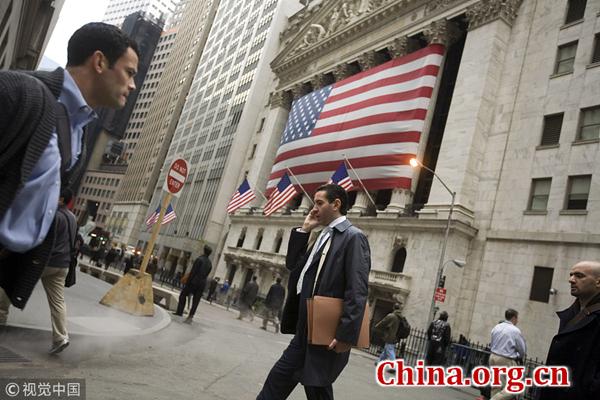The real history of the 2008 crash
- By Heiko Khoo
 0 Comment(s)
0 Comment(s) Print
Print E-mail China.org.cn, September 9, 2018
E-mail China.org.cn, September 9, 2018

Adam Tooze is a radical British economic historian who teaches at Columbia University in the USA. His latest book "Crashed, How a Decade of Financial Crises Changed the World" examines macro-level transformations since 2008. Tooze notes that an intellectual and cognitive rewiring in our perception of economics and of the world balance of power is taking place. He says our national economic and social concepts, which were forged after WWI and anchored in the 20th century, are breaking down.
The dominant economic and geopolitical view before 2008 revolved around the idea that a global system was emerging and that neo-liberal policy mistakes caused an economic collapse. It has been widely suggested that all that was needed was a Keynesian revival in the United States to sort things out. Tooze argues that this dominant analytical framework misinterprets the entire macroeconomic system of the new millennium. Tooze goes on to smash the myth of China's responsibility for the world economic crisis in 2008.
Although the housing market slowdown had a significant impact on the economy, given it is the largest asset class in the world, its financial impact offers an inadequate explanation for the crisis of 2008. For example, the 2001 dot com bust caused losses just as large as the real estate crash of 2008, but this did not lead to any serious financial crash. More importantly, it did not cause overall global investment to collapse.
Instead, the problems of 2008 were global and engrained in systemic international economic relations. It is well known that trade surpluses generated in Asia were used to buy U.S. treasuries, but what about European investments in U.S. real estate? While we know that China, Germany and Japan are the big lenders to the United States, Tooze shows that this is a fundamental misconception about the real state of financial flows into the USA. In fact, the majority of money flowing into the USA before 2008 came from Britain, and the second biggest source was Europe. The influence of Chinese funds to the U.S. only assumed a dominant role during the great recession of 2007-8, when British and European flows collapsed. After this period, the influx of European money rose again.
The myth about China owning the United States is based on the flow of real goods, which ignores total gross capital flows. This blind spot helps to reinforce the dominant theory that conveniently corresponds with anti-Chinese propaganda.
In this regard, it seems that financial globalization theory completely ignored the World Bank balance sheets! These reveal a very different reality to what we are told. In fact, Europe was the main conduit of global financial flows before the crisis, borrowing short and investing long. Tooze dismisses the theory that an impending U.S.-China meltdown was the core problem in the world in the run up to 2008. In reality, European-U.S. financial flows were so vast that it's been likened to two elephants sitting on a see-saw. Yes, they can balance each other out, but how can one get off without resulting in the other getting badly hurt? Tooze's thesis is also backed by data: Global Gross Capital flows experienced an implosion in the period 2007-2008, and as everyone tried to get off the see-saw, there was a 95 percent fall in capital flows.
The exposure of European banks was enormous, but, for example, the Bank of England held miniscule dollar reserves compared to China, while the European Central Bank held only a tenth of those of China. In response, the Fed pumped liquidity into the financial system from the fall of 2007 onwards, regardless of the quality of the banks that bought the dollars. We know that this support from the Fed to global financial institutions, particularly European banks, was astronomical in scale, but many of these banks did not have the assets to act as collateral. So, the Fed simply swapped dollars for euros based on 6 page contracts at rates agreed with the ECB, effectively lending them limitless funds on demand. Trillions of dollars were lent in this way as "swap-lines" to secure transnational stabilization. In other words, the financial system was held together by major institutions giving money to banks, regardless of nationality, to prevent a fire sale of assets and a general collapse. However, it was geopolitics that decided who would get what, and who would be excluded: Russia, for example, was excluded on this basis.
Tooze says the bailouts of banks and the protection of the wealthiest at the expense of the many lies behind today's "populist" reaction against "capitalism" from the left and, more prominently, from the right. In addition, the uncontrolled financial sector and debt problems have not gone away.
Heiko Khoo is a columnist with China.org.cn. For more information please visit:
http://china.org.cn/opinion/heikokhoo.htm
Opinion articles reflect the views of their authors, not necessarily those of China.org.cn.






Go to Forum >>0 Comment(s)